Despite various assessments claiming that the Iranians have no apparent interest in increasing tensions in the Middle East in light of the nuclear talks, they appear to be doing exactly the opposite, taking advantage of the escalation in Gaza to do so. When examining all the events that took place on Israel’s northern borders with Syria and Lebanon, it seems that the Iranians have a clear interest in increasing tensions to harm Israel both operationally and morally. The Iranians prefer to act “remotely” through proxies and through the use of fictitious names to achieve their interests against Israel without causing harm to their interest in the international arena (nuclear talks).
During the escalation in the Gaza Strip, we witnessed two attacks against Israel, which originated in Syria and which were carried out in our assessment by the radical Shi’ite elements headed by Iran with the guidance or direct involvement of the Quds Force. The first attack was the shooting of at least 3 rockets, which were fired at Israeli territory on May 14, at 20:30. The second attack took place on the morning of May 18, where a UAV, which was launched from Syrian territory, passed over the northwest area of Jordan crossing toward Israel south of the Sea of Galilee in the Beit She’an area. The UAV was intercepted and shot down by the Israeli Air Force.
We assess that these two attacks were coordinated and synchronized and that they indicate an Iranian involvement, utilizing the Quds Force, acting against Israel during the escalation In the Gaza Strip. While rocket fire could be considered a “simple act to carry out” and “a symbolic act of solidarity” with the “Palestinian struggle,” a UAV launch is a much more complex operation and is considered a quality operation. In our assessment, the timing of both attacks was coordinated. The rocket fire was intended to “lull Israel into a false sense of security” creating a concept that there would be no “more attacks from Syria”, only that the quality operation in form of launching a UAV, came four days later.
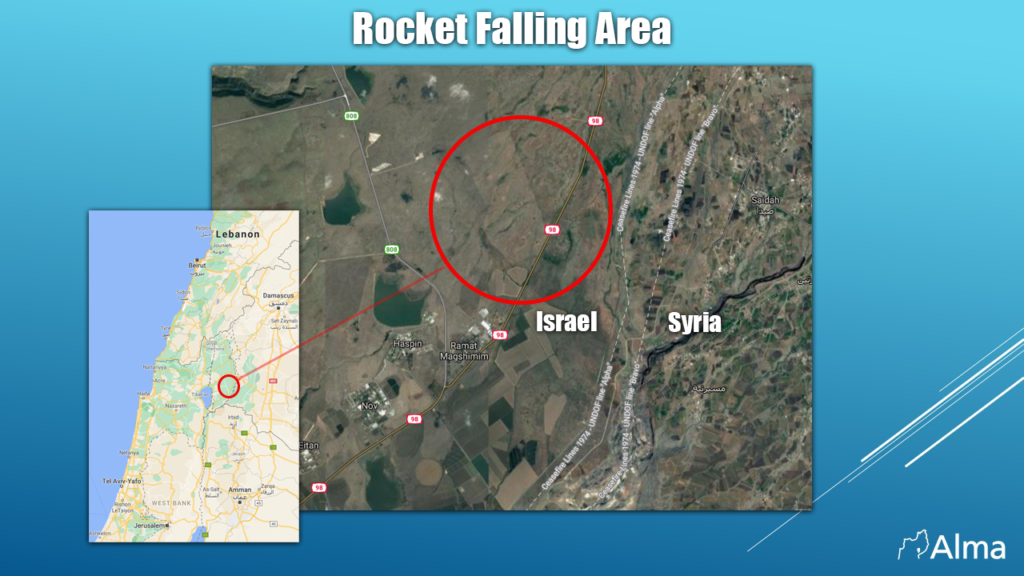
In the first attack on May 14, three rockets were fired from southern Syria into Israeli territory. One rocket fell in Syrian territory (in the area of the Syrian cities of Al-Raqqah and Ghadir al-Bostan), and two rockets fell in an open area near the village of Ramat Magshimim in Israel. After about three and a half hours from the firing of the rockets, an Iraqi Shiite militia called “Shabab al-Islam” claimed responsibility for the attack on its Telegram channel. It is our understanding that the militia’s Telegram channel has been active from the beginning of 2020, and currently has 3.5 thousand followers. According to the militia’s (apparently mistaken) statement, the rockets were fired at Kfar Blum (a town near Kiryat Shmona and far from where the rockets landed).
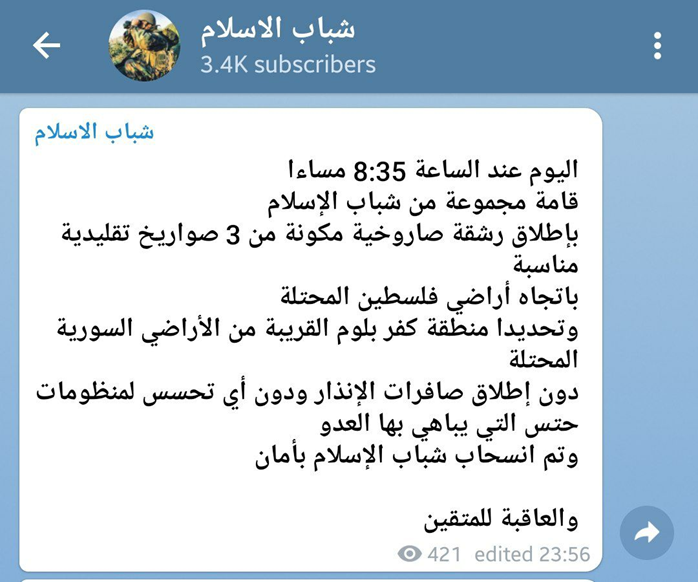
According to the information we have, “Shabab al-Islam” is a Shi’ite militia operating under Iranian auspices. The militia identifies through stickers and by sharing the content as a sub-militia of a militia called “Ashab al-Kahf ” (details below). “Shabab al-Islam” shared a proclamation on behalf of “Ashab al-Kahf ” on their telegram channel, before claiming responsibility and not long after the rocket launching. In the proclamation, they do not take responsibility for the rocket barrage, but they do sympathize with the Palestinians on behalf of the Iraqi people, threatening American forces with retaliation should they assist Israel in the Gaza Strip, directly or from Iraq. The proclamation was signed in the name of “the Islamic Resistance in Iraq – Ashab al-Kahf”:
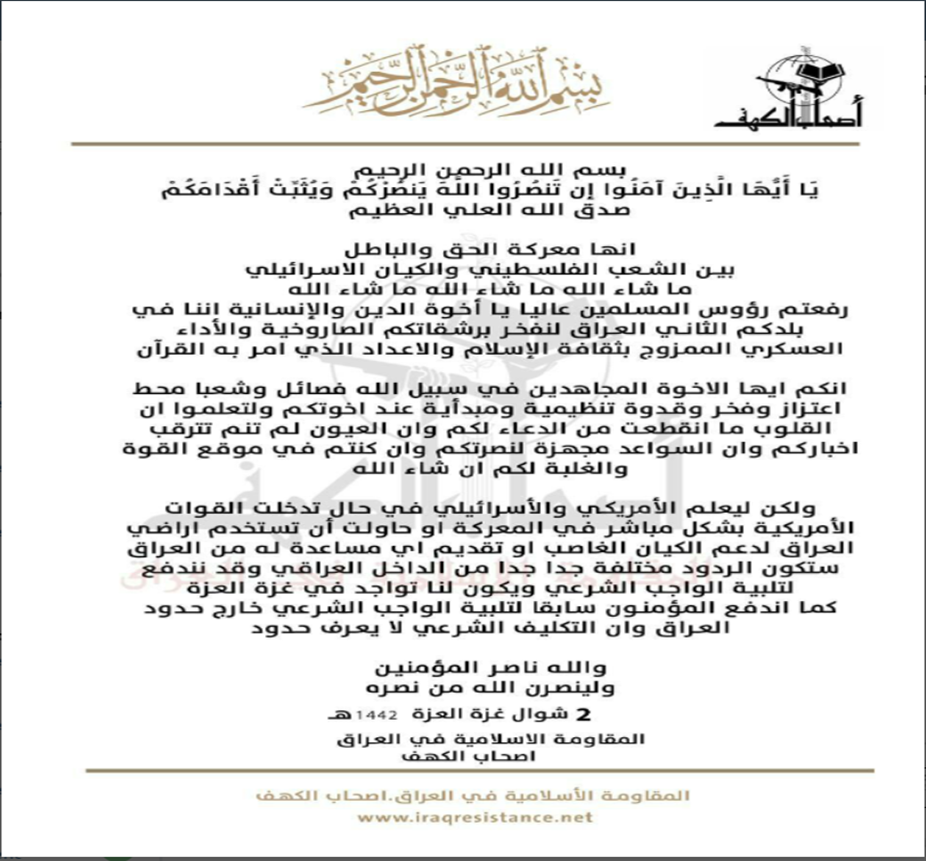
Immediately after launching the rockets at Israel (at 20:30) and before taking responsibility (at 23:56), the telegram page of “Shabab al-Islam” read: The Kahfein (originally – “alkahfeiyun”) wants to participate in the mandatory war against the liars (the word “alkahfeiyun” means “the people of the cave”. The term was taken from the 18th. Surah in the Qur’an called “Sura al-Kahf” based on a story that appears in both Christianity and Judaism). After a few hours, extensive activity on the telegram page continued, in the form of pro-Shi’ite and pro-Syrian content until responsibility for the rocket attack was claimed.
The “Ashab al-Kahf ” was established in 2020 as an extension of the Iraqi roof militia “al-Hashd al-Shaabi” which operates under the auspices of the Iranian Quds Force. “Ashab al-Kahf ” threatened to attack American targets in Iraq and avenge the death of Soleimani. In July 2020 the militia claimed responsibility for the downing of a U.S. UAV in Iraq and damage to a U.S. logistics convoy. We know that in August 2020, the militia caused an explosion at the border crossing between Iraq and Kuwait near an American base that was probably the target. In addition, “Ashab al-Kahf ” launched a rocket attack on the American embassy in Baghdad in November 2020 (apparently of a similar type to those fired at Israel).

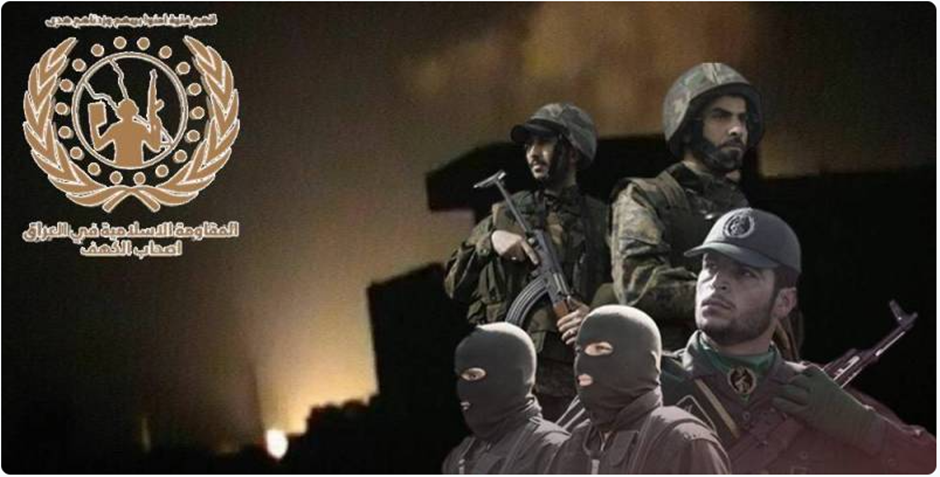
We do not rule out the possibility that the Iranians, through Quds Force, acted to misrepresent the data, and in fact, these are two fictitious militias with fictitious names that are inactive, and their name is used to take responsibility as needed. We do not rule out that this may be an act of information warfare and a cover made to obscure the identity of the real rocket attack perpetrators. This ruse is carried out for information security reasons to make it difficult for Israel to definitely identify the attacking force and thus neutralize Israel’s ability to respond.
The second high-quality attack took place on the morning of May 18, in which a UAV, which was carrying explosives, was launched towards Israeli territory. Based on the analysis of the geographical data, we estimate that the UAV was launched from Syrian territory, passed over the northwestern territory of Jordan, and crossed toward Israel south of the Sea of Galilee in the area of the city of Beit She’an. The UAV was intercepted and shot down by the Israeli Air Force.

Based on a look at the debris of the UAV, it can be concluded that such UAVs are owned by the radical Shiite axis headed by Iran. Also, the launching and flying capabilities of this type of UAV exist throughout the ranks of the radical Shiite axis led by Iran. In all probability, the radical Shiite axis would be operatively comfortable exercising these capabilities against Israel from Syria. It should be noted that in February 2018, an explosive UAV, which was launched by Quds Force from the T-4 airport in Syria, was shot down by the Israeli Air Force. In our estimation, the UAV flew on a similar route and entered Israeli territory in the same area as the current UAV.
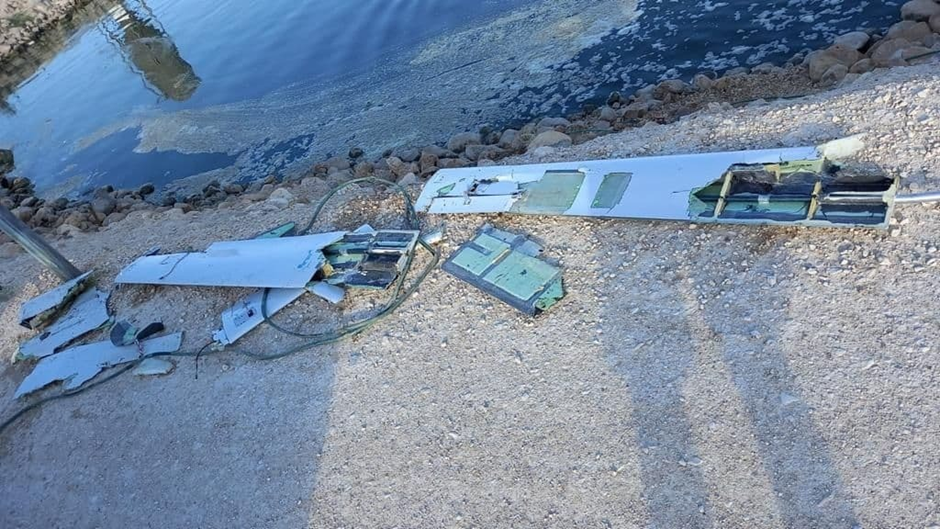
At this stage, we do not know the certain identity of the UAV launchers, but in light of the above, these are Shi’ite militiamen operating in Syria under the direction of the Quds Force, or alternatively, Quds force personnel themselves who launched the UAV against Israel.
Despite various assessments claiming that the Iranians have no apparent interest in increasing tensions in the Middle East in light of the nuclear talks, they appear to be doing exactly the opposite, taking advantage of the escalation in Gaza to do so. When examining all the events that took place on Israel’s northern borders with Syria and Lebanon, it seems that the Iranians have a clear interest in increasing tensions to harm Israel both operationally and morally. The Iranians prefer to act “remotely” through proxies and through the use of fictitious names to achieve their interests against Israel without causing harm to their interest in the international arena (nuclear talks).





